Ford Explorer EV vs Lotus Emeya – Differences & prices compared
Compare performance, boot space, consumption and price in one view.
Find out now: which car is the better choice for you – Ford Explorer EV or Lotus Emeya?
The Ford Explorer EV (SUV) comes with a Electric engine and Automatic transmission. In comparison, the Lotus Emeya (Hatchback) features a Electric engine with Automatic transmission.
When it comes to boot capacity, the Ford Explorer EV offers 450 L, while the Lotus Emeya provides 509 L – depending on how much space you need. If you’re looking for more power, decide whether the 340 HP of the Ford Explorer EV or the 918 HP of the Lotus Emeya suits your needs better.
In terms of consumption, the values are 14.50 kWh per 100 km for the Ford Explorer EV, and 18.70 kWh for the Lotus Emeya.
Price-wise, the Ford Explorer EV starts at 34200 £, while the Lotus Emeya is available from 92600 £. Compare all the details and find out which model fits your lifestyle best!
Ford Explorer EV
The Ford Explorer EV marks a significant step forward in the brand's journey towards electrification, offering an impressive blend of performance and sustainability. This modern SUV features a sleek design complemented by advanced technology that enhances the driving experience. With a focus on comfort and innovation, the Explorer EV aims to redefine family travel for the electric age.
details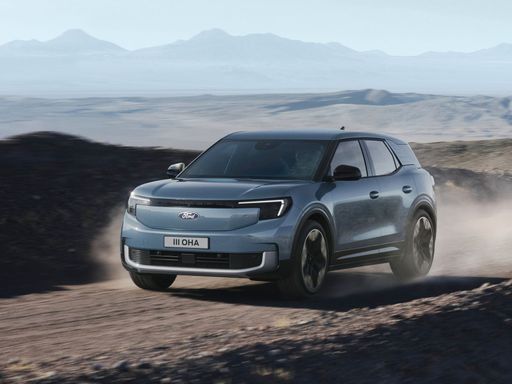 @ electricexplorer.fordpresskits.com
@ electricexplorer.fordpresskits.com
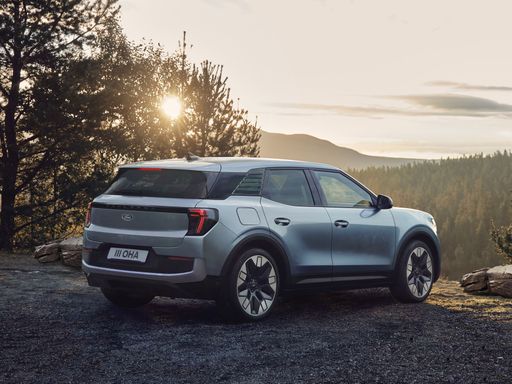 @ electricexplorer.fordpresskits.com
@ electricexplorer.fordpresskits.com
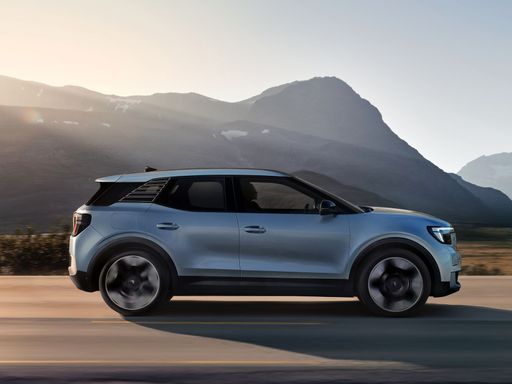 @ electricexplorer.fordpresskits.com
@ electricexplorer.fordpresskits.com
Lotus Emeya
The Lotus Emeya represents a bold step forward for the brand, combining sleek design with cutting-edge technology. This electric vehicle offers a perfect blend of performance and luxury, capturing the essence of Lotus's heritage while pushing into the future. Its aerodynamic silhouette and plush interior ensure that both driving enthusiasts and comfort seekers will find much to admire.
details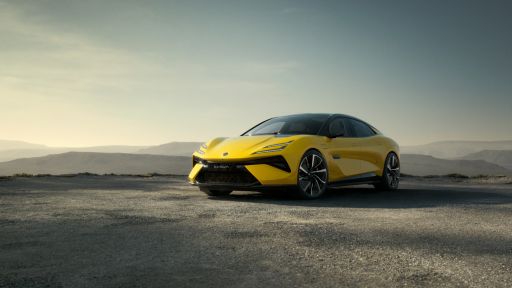 @ media.lotuscars.com
@ media.lotuscars.com
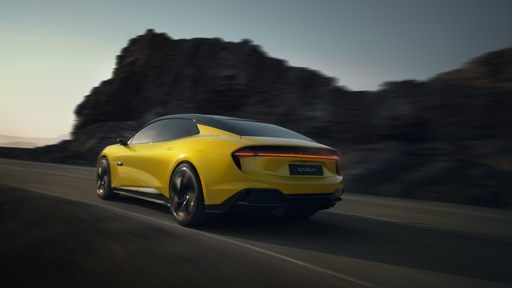 @ media.lotuscars.com
@ media.lotuscars.com
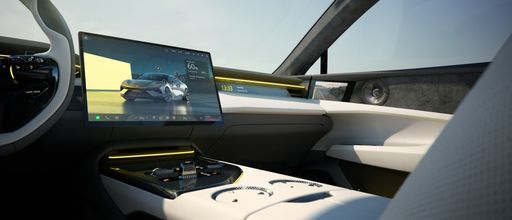 @ media.lotuscars.com
@ media.lotuscars.com

|

|
|
|
|
Costs and Consumption |
|
|---|---|
|
Price
34200 - 48800 £
|
Price
92600 - 138000 £
|
|
Consumption L/100km
-
|
Consumption L/100km
-
|
|
Consumption kWh/100km
14.5 - 17.2 kWh
|
Consumption kWh/100km
18.7 - 22.4 kWh
|
|
Electric Range
360 - 602 km
|
Electric Range
485 - 580 km
|
|
Battery Capacity
52 - 79 kWh
|
Battery Capacity
98.90 kWh
|
|
co2
0 g/km
|
co2
0 g/km
|
|
Fuel tank capacity
-
|
Fuel tank capacity
-
|
Dimensions and Body |
|
|---|---|
|
Body Type
SUV
|
Body Type
Hatchback
|
|
Seats
5
|
Seats
5
|
|
Doors
5
|
Doors
5
|
|
Curb weight
1908 - 2179 kg
|
Curb weight
2555 - 2650 kg
|
|
Trunk capacity
445 - 450 L
|
Trunk capacity
509 L
|
|
Length
4468 mm
|
Length
5139 mm
|
|
Width
1871 mm
|
Width
2005 mm
|
|
Height
1630 - 1639 mm
|
Height
1459 mm
|
|
Payload
561 - 585 kg
|
Payload
450 - 545 kg
|
Engine and Performance |
|
|---|---|
|
Engine Type
Electric
|
Engine Type
Electric
|
|
Transmission
Automatic
|
Transmission
Automatic
|
|
Transmission Detail
-
|
Transmission Detail
-
|
|
Drive Type
Rear-Wheel Drive, All-Wheel Drive
|
Drive Type
All-Wheel Drive
|
|
Power HP
170 - 340 HP
|
Power HP
612 - 918 HP
|
|
Acceleration 0-100km/h
5.3 - 8.7 s
|
Acceleration 0-100km/h
2.8 - 4.2 s
|
|
Max Speed
160 - 180 km/h
|
Max Speed
250 - 256 km/h
|
|
Torque
310 - 679 Nm
|
Torque
710 - 985 Nm
|
|
Number of Cylinders
-
|
Number of Cylinders
-
|
|
Power kW
125 - 250 kW
|
Power kW
450 - 675 kW
|
|
Engine capacity
-
|
Engine capacity
-
|
General |
|
|---|---|
|
Model Year
2024 - 2025
|
Model Year
2025
|
|
CO2 Efficiency Class
A
|
CO2 Efficiency Class
A
|
|
Brand
Ford
|
Brand
Lotus
|
Ford Explorer EV
Unveiling the Future: The Ford Explorer EV
The all-new Ford Explorer EV makes a bold statement in the electric vehicle market with its amalgamation of cutting-edge technology, expansive features, and forward-thinking design. As Ford moves towards a more sustainable future, the Explorer EV stands out as a prime example of the brand's commitment to innovation and performance.
Power and Performance
Beneath its stylish exterior, the Ford Explorer EV boasts a powerful electric motor offering a range of power outputs from 170 PS to an impressive 340 PS. The vehicle provides either rear-wheel drive or an advanced all-wheel-drive system that ensures optimal traction and stability under diverse driving conditions. Thanks to its rapid acceleration, the Explorer EV races from 0 to 100 km/h in as little as 5.3 seconds, while maintaining a top speed of 180 km/h across its variants.
Battery Efficiency and Range
A major highlight of the Explorer EV is its varied battery options, which define its 'Standard Range' and 'Extended Range' models. With capacities ranging from 52 kWh to 79 kWh, the EV offers an impressive driving range of up to 602 km on a single charge. The electric consumption holds remarkable efficiency, varying between 13.9 kWh/100km and 16.6 kWh/100km, highlighting Ford’s innovation in energy management.
Interior Comfort and Technology
Inside, the Explorer EV exudes comfort with its high-quality materials and a spacious layout that accommodates up to five passengers. The vehicle is available in several trim levels, including the luxurious 'Premium' and 'Limited Edition', each outfitted with state-of-the-art technology. Drivers benefit from an intuitive infotainment system, comprehensive digital displays, and a variety of connectivity options that make every journey pleasurable and efficient.
Safety and Sustainability
Safety remains a priority for Ford, evident in the Explorer EV's suite of advanced safety features. The vehicle is equipped with cutting-edge driver-assistance technologies that work tirelessly to safeguard passengers with features such as adaptive cruise control and lane-keeping assist. Moreover, as a zero-emission vehicle, it proudly boasts a CO2 efficiency class rating of A, underpinning its eco-friendly credentials and Ford’s commitment to reducing the carbon footprint.
Pricing and Availability
The Ford Explorer EV is set to make waves with its competitive pricing. Starting between €42,500 and €57,200 depending on the trim and features, it offers exceptional value for those looking for a high-performing and sustainable SUV. The 2024 model is now available for order and promises to redefine expectations in the electric SUV segment.
Final Thoughts
The Ford Explorer EV embodies a harmonious blend of style, efficiency, and technological innovation. As a harbinger of Ford's electric future, it promises not just to meet but exceed the expectations of modern consumers by delivering an exceptional driving experience that is both versatile and responsible.
Lotus Emeya
A New Era for Lotus: Introducing the Emeya
The Lotus Emeya marks a bold new chapter in the illustrious history of the British automaker. As a fully electric vehicle, the Emeya not only stands as a testament to Lotus's commitment to innovation but also as a glimpse into the future of high-performance eco-friendly cars. Let's explore what sets this remarkable vehicle apart.
Sleek Design Meets Performance
With its striking fastback design, the Lotus Emeya is a masterpiece of aerodynamic efficiency and aesthetic brilliance. Its dimensions, measuring at 5139 mm in length, 2005 mm in width, and 1459 mm in height, provide a sporty yet surprisingly spacious interior accommodating up to five passengers. This elegant bodywork isn't just for show; it enhances the Emeya's capability to glide through the air with minimal resistance, contributing to its exceptional performance figures.
Power and Range: Electrifying Performance
The Lotus Emeya is available in multiple configurations, with power outputs ranging from 612 to a staggering 918 PS, demonstrating the versatility and potential of electric power. This is complemented by an impressive range of up to 610 km, making the Emeya ideal for both urban commuting and long-distance driving.
Equipped with a 102 kWh battery pack, the Emeya ensures that those thrilling drives are not limited by charging frequency. The car's all-wheel drive system, combined with a rapid 0-100 km/h acceleration in just 4.2 seconds, redefines the sporty electric vehicle experience.
Innovative Technology for Ultimate Control
Lotus has infused the Emeya with cutting-edge technology, resulting in an unparalleled driving experience. From seamless shifts provided by its automatic reduction gearbox to the advanced aerodynamic design, every technical detail in the Emeya is aimed at enhancing efficiency and enjoyment.
This advanced electric vehicle also includes various driving modes tailored for different driving conditions and preferences, empowering the driver with unparalleled control and responsiveness, whether navigating city streets or pushing limits on the open road.
Luxurious Interiors: Where Comfort Meets Craftsmanship
Stepping inside the Lotus Emeya, one is instantly greeted by an interior that embodies a sophisticated blend of luxury and modernity. The cabin is meticulously designed to offer premium comfort, with high-quality materials and state-of-the-art infotainment systems that cater to both driver and passenger needs.
Despite its high-performance capabilities, the Emeya ensures an exceptionally quiet and smooth ride, a testament to Lotus's dedication to quality and comfort. Its spacious five-door configuration further enhances practicality, making it an appealing choice for families and enthusiasts alike.
Environmental and Economic Impact
Running entirely on electricity, the Emeya emits zero CO2 emissions, securing its position as an eco-friendly alternative in the high-performance segment. Additionally, its impressive energy efficiency and cutting-edge battery technology position it favourably in terms of cost per kilometre compared to traditional combustion engines.
With prices ranging from €106,400 to €150,990, the Lotus Emeya offers various configurations that cater to different power and feature preferences, ensuring value across its line-up.
Conclusion: The Emeya Experience
The Lotus Emeya is not just a car; it's a statement of intent from Lotus. It showcases the boundless potential of electric vehicles to deliver exhilarating performance without compromising on luxury or sustainability. By blending hallmark Lotus dynamics with modern technological marvels, the Emeya is sure to leave a lasting impression on the automotive landscape.
The prices and data displayed are estimates based on German list prices and may vary by country. This information is not legally binding.
